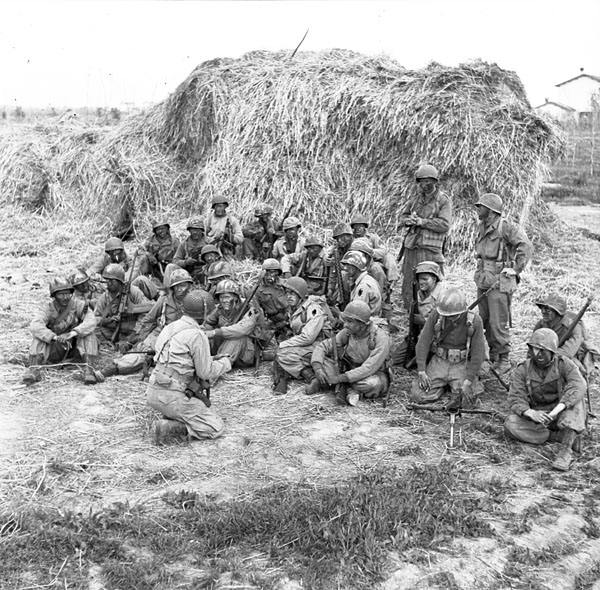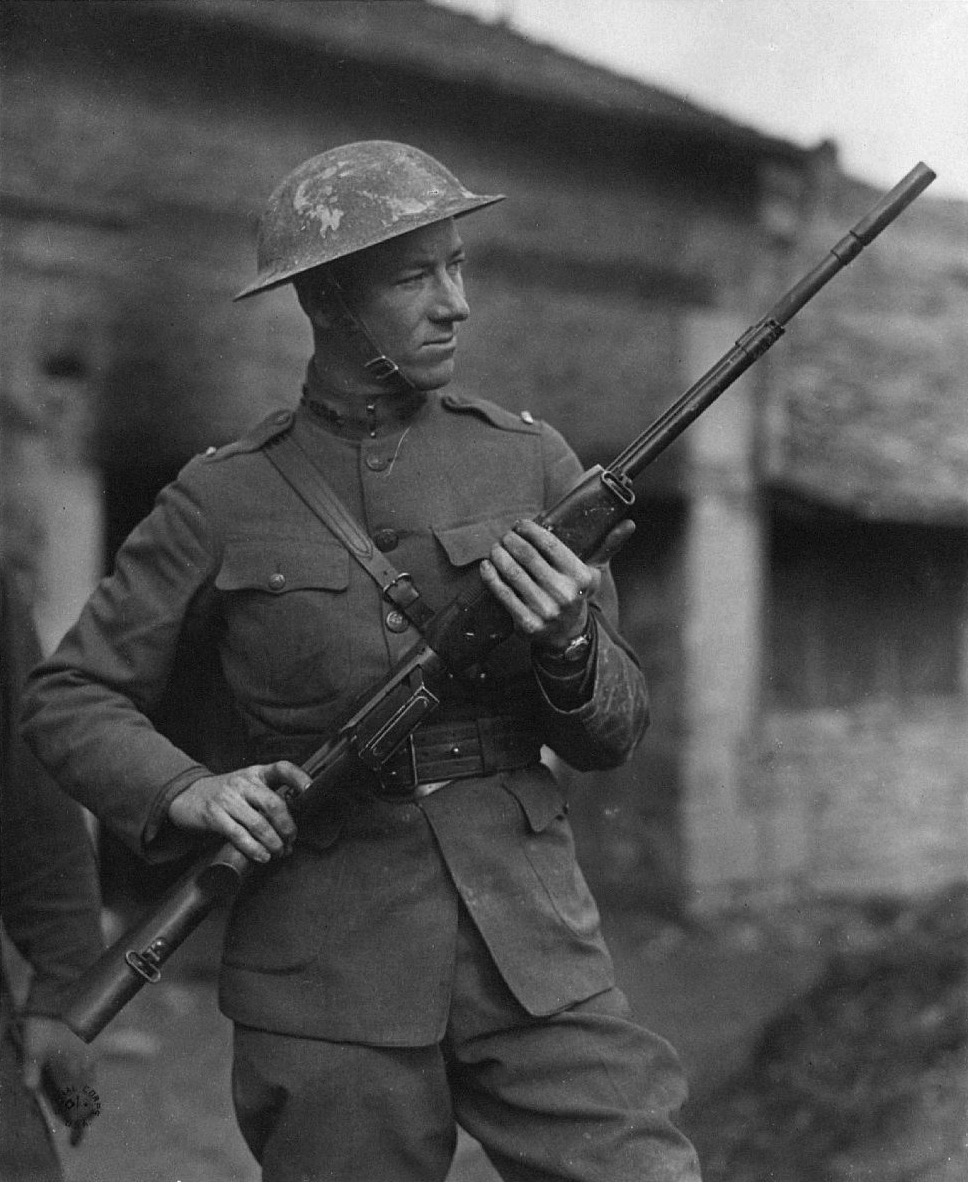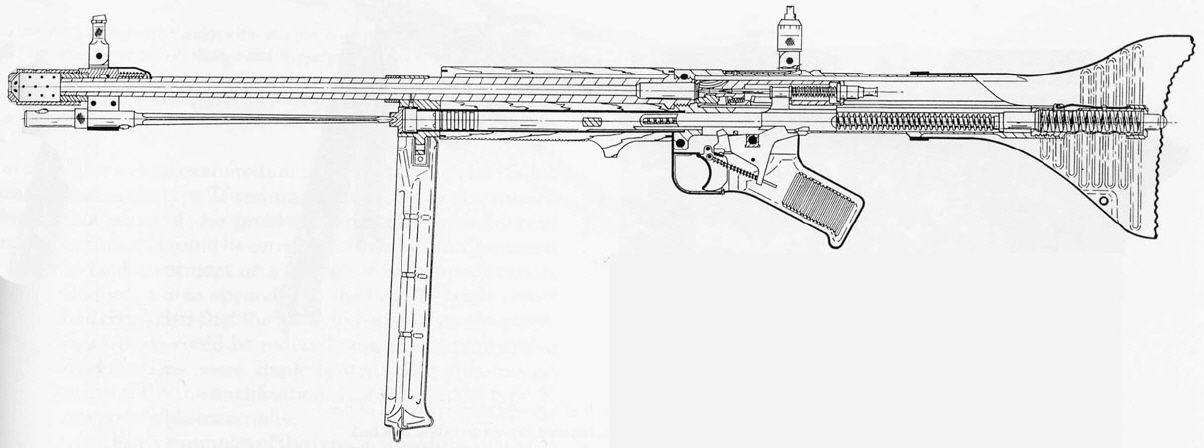|
M1941 Johnson Light Machine Gun
The M1941 Johnson Light Machine Gun, also known as the ''Johnson'' and the ''Johnny gun'', was an American recoil-operated light machine gun designed by Melvin Johnson in the late 1930s. It shared the same operating principle and many parts with his M1941 Johnson rifle and M1947 Johnson auto carbine. Design The M1941 Johnson light machine gun was designed by a Boston lawyer and captain in the Marine Corps Reserve named Melvin Johnson Jr. His goal was to build a semi-automatic rifle that would outperform the M1 Garand the US Army had adopted. By late 1937, he had designed, built, and successfully tested both a semi-automatic rifle and a prototype light machine gun. Each shared a significant number of physical characteristics and common parts, and both operated on the principle of short recoil with a rotating bolt. He took the parts of other guns, switching them out and creating the M1941 light machine gun. Johnson's curved, single-column magazine attached to the left side of ... [...More Info...] [...Related Items...] OR: [Wikipedia] [Google] [Baidu] |
Light Machine Gun
A light machine gun (LMG) is a light-weight machine gun designed to be operated by a single infantryman, with or without an assistant, as an infantry support weapon. LMGs firing cartridge (firearms), cartridges of the same caliber as the other riflemen of the same combat unit are often referred to as squad automatic weapons. Characteristics While early light machine guns fired full-powered rifle cartridges, modern light machine guns often fire smaller-caliber rifle cartridges than medium machine guns – generally the same intermediate cartridge fired by a service's standard assault rifle – and are usually lighter and more compact. Some LMGs, such as the Russian RPK, are modifications of existing designs and designed to share the same ammunition. Adaptations to the original rifle generally include a larger magazine, a heavier barrel to resist overheating, a more robust mechanism to support sustained fire and a bipod. A light machine gun is also defined by its usage as well ... [...More Info...] [...Related Items...] OR: [Wikipedia] [Google] [Baidu] |
Semi-automatic Rifle
A semi-automatic rifle is a type of rifle that fires a single round each time the Trigger (firearms), trigger is pulled while automatically loading the next Cartridge (firearms), cartridge. These rifles were developed Pre-World War II, and were used throughout World War II. Rifles are firearms designed to be fired while held with both hands and braced against the shooter's shoulder for stability. Externally similar shotguns can fire multiple Shot (pellet), pellets simultaneously through a smoothbore, while rifle Gun barrel, barrels are Rifling, rifled to spin-stabilize individual bullets. The actions of semi-automatic rifles use a portion of the fired cartridge's energy to eject the spent casing and load a new round into the Chamber (firearms), chamber, readying the rifle to be fired again. This design differs from manually operated rifles such as Bolt action, bolt-action and Lever action, lever-action rifles, which need to chamber a cartridge manually before firing again, and ... [...More Info...] [...Related Items...] OR: [Wikipedia] [Google] [Baidu] |
First Special Service Force
The 1st Special Service Force (FSSF) was an elite joint American–Canadian commando unit in World War II, formed by Lieutenant Colonel Robert T. Frederick of the Operations Division of the U.S. General Staff. During the Italian campaign of World War II, it was commanded by Frederick and attached to the United States Army North, United States Fifth Army. In August 1944, the Force was attached to 1st Airborne Task Force (commanded by then Major General Frederick) for the campaign in southern France. The unit was organized in 1942 and trained at Fort William Henry Harrison near Helena, Montana, in the United States. The Force served in the Aleutian Islands, fought in Italy and southern France, and was disbanded in December 1944. The modern American and Canadian special operations forces trace their heritage to this unit. In 2013, the United States Congress passed a bill to award the 1st Special Service Force the Congressional Gold Medal. Origins and development Background Geo ... [...More Info...] [...Related Items...] OR: [Wikipedia] [Google] [Baidu] |
Axis Powers
The Axis powers, originally called the Rome–Berlin Axis and also Rome–Berlin–Tokyo Axis, was the military coalition which initiated World War II and fought against the Allies of World War II, Allies. Its principal members were Nazi Germany, Fascist Italy, Kingdom of Italy and the Empire of Japan. The Axis were united in their far-right positions and general opposition to the Allies, but otherwise lacked comparable coordination and ideological cohesion. The Axis grew out of successive diplomatic efforts by Germany, Italy, and Japan to secure their own specific expansionist interests in the mid-1930s. The first step was the Italo-German protocol of 23 October 1936, protocol signed by Germany and Italy in October 1936, after which Italian leader Benito Mussolini declared that all other European countries would thereafter rotate on the Rome–Berlin axis, thus creating the term "Axis". The following November saw the ratification of the Anti-Comintern Pact, an anti-communis ... [...More Info...] [...Related Items...] OR: [Wikipedia] [Google] [Baidu] |
Special Forces
Special forces or special operations forces (SOF) are military units trained to conduct special operations. NATO has defined special operations as "military activities conducted by specially designated, organized, selected, trained and equipped forces using unconventional techniques and modes of employment". Special forces emerged in the early 20th century, with a significant growth in the field during World War II, when "every major army involved in the fighting" created formations devoted to special operations behind enemy lines. Depending on the country, special forces may perform functions including Airborne forces, airborne operations, counter-insurgency, counter-terrorism, foreign internal defense, Covert operations, covert ops, Direct action (military), direct action, Hostage crises, hostage rescue, high-value targets/Manhunt (military), manhunt, intelligence, surveillance, target acquisition, and reconnaissance, intelligence operations, Mobility (military), mobility o ... [...More Info...] [...Related Items...] OR: [Wikipedia] [Google] [Baidu] |
Automatic Rifle
An automatic rifle is a type of Self-loading rifle, autoloading rifle that is capable of fully automatic firearm, automatic fire. Automatic rifles are generally selective fire, select-fire weapons capable of firing in Semi-automatic firearm, semi-automatic and automatic firing modes (some automatic rifles are capable of Burst mode (weapons), burst-fire as well). Automatic rifles are distinguished from semi-automatic rifles in their ability to fire more than one shot in succession once the trigger is pulled. Most automatic rifles are further subcategorized as battle rifles or assault rifles. History Maxim In June 1883 Hiram Maxim filed his first patent to do with automatic firearms covering semi-automatic and fully automatic Winchester rifle, Winchester and Martini-Henry rifles as well as an original automatic rifle and blowback- and recoil-operated machine guns, both single and multi-barrelled. Mannlicher In 1885 Ferdinand Mannlicher made an experimental self-loader based on wo ... [...More Info...] [...Related Items...] OR: [Wikipedia] [Google] [Baidu] |
FG 42
The FG 42 (German language, German: ''Fallschirmjägergewehr'' 42, "paratrooper rifle 42") is a selective fire, selective-fire 7.92×57mm Mauser automatic rifle produced in Nazi Germany during World War II. The weapon was developed specifically for the use of the Fallschirmjäger (World War II), ''Fallschirmjäger'' Airborne forces, airborne infantry in 1942 and was used in very limited numbers until the end of the war. It combined the characteristics and firepower of a light machine gun in a lightweight form slightly shorter (but considerably bulkier and heavier) than the standard-issue Karabiner 98k bolt-action infantry rifle. Considered one of the most advanced weapon designs of World War II, the FG 42 influenced post-war small arms development, and many features of its design, such as general shape, stock style, gas-rotating bolt operation and sheet metal and plastic construction were copied by the US Army when they developed the M60 machine gun. History At the time of th ... [...More Info...] [...Related Items...] OR: [Wikipedia] [Google] [Baidu] |
Nazi Germany
Nazi Germany, officially known as the German Reich and later the Greater German Reich, was the German Reich, German state between 1933 and 1945, when Adolf Hitler and the Nazi Party controlled the country, transforming it into a Totalitarianism, totalitarian dictatorship. The Third Reich, meaning "Third Realm" or "Third Empire", referred to the Nazi claim that Nazi Germany was the successor to the earlier Holy Roman Empire (800–1806) and German Empire (1871–1918). The Third Reich, which the Nazis referred to as the Thousand-Year Reich, ended in May 1945, after 12 years, when the Allies of World War II, Allies defeated Germany and entered the capital, Berlin, End of World War II in Europe, ending World War II in Europe. After Hitler was appointed Chancellor of Germany in 1933, the Nazi Party began to eliminate political opposition and consolidate power. A 1934 German referendum confirmed Hitler as sole ''Führer'' (leader). Power was centralised in Hitler's person, an ... [...More Info...] [...Related Items...] OR: [Wikipedia] [Google] [Baidu] |
Machine Gun M1941 Johnson 3
A machine is a physical system that uses power to apply forces and control movement to perform an action. The term is commonly applied to artificial devices, such as those employing engines or motors, but also to natural biological macromolecules, such as molecular machines. Machines can be driven by animals and people, by natural forces such as wind and water, and by chemical, thermal, or electrical power, and include a system of mechanisms that shape the actuator input to achieve a specific application of output forces and movement. They can also include computers and sensors that monitor performance and plan movement, often called mechanical systems. Renaissance natural philosophers identified six simple machines which were the elementary devices that put a load into motion, and calculated the ratio of output force to input force, known today as mechanical advantage. Modern machines are complex systems that consist of structural elements, mechanisms and control components ... [...More Info...] [...Related Items...] OR: [Wikipedia] [Google] [Baidu] |
Stock (firearm)
A gunstock or often simply stock, the back portion of which is also known as a shoulder stock, a buttstock, or simply a butt, is a part of a long gun that provides structural support, to which the barrel, action, and firing mechanism are attached. The stock also provides a means for the shooter to firmly brace the gun and easily aim with stability by being held against the user's shoulder when shooting the gun, and helps to counter muzzle rise by transmitting recoil straight into the shooter's body. The tiller of a crossbow is functionally the equivalent of the stock on a gun. History and etymology The term stock in reference to firearms dates to 1571 is derived from the Germanic word ''Stock'', meaning tree trunk, referring to the wooden nature of the gunstock. Early hand cannons used a simple stick fitted into a socket in the breech end to provide a handle. The modern gunstock shape began to evolve with the introduction of the arquebus, a matchlock with a longer barrel ... [...More Info...] [...Related Items...] OR: [Wikipedia] [Google] [Baidu] |
Magazine (firearm)
A magazine, often simply called a mag, is an ammunition storage and feeding device for a repeating firearm, either integral within the gun (internal/fixed magazine) or externally attached (detachable magazine). The magazine functions by holding several cartridge (firearms), cartridges within itself and sequentially pushing each one into a position where it may be readily loaded into the gun barrel, barrel chamber (firearms), chamber by the firearm's moving action (firearms), action. The detachable magazine is sometimes colloquially referred to as a "clip (ammunition), clip", although this is technically inaccurate since a clip is actually an accessory device used to help load ammunition into a magazine or cylinder. Magazines come in many shapes and sizes, from integral tubular magazines on lever-action and pump-action rifles and shotguns, that may hold more than five rounds, to detachable box magazines and drum magazines for automatic rifles and light machine guns, that may h ... [...More Info...] [...Related Items...] OR: [Wikipedia] [Google] [Baidu] |








